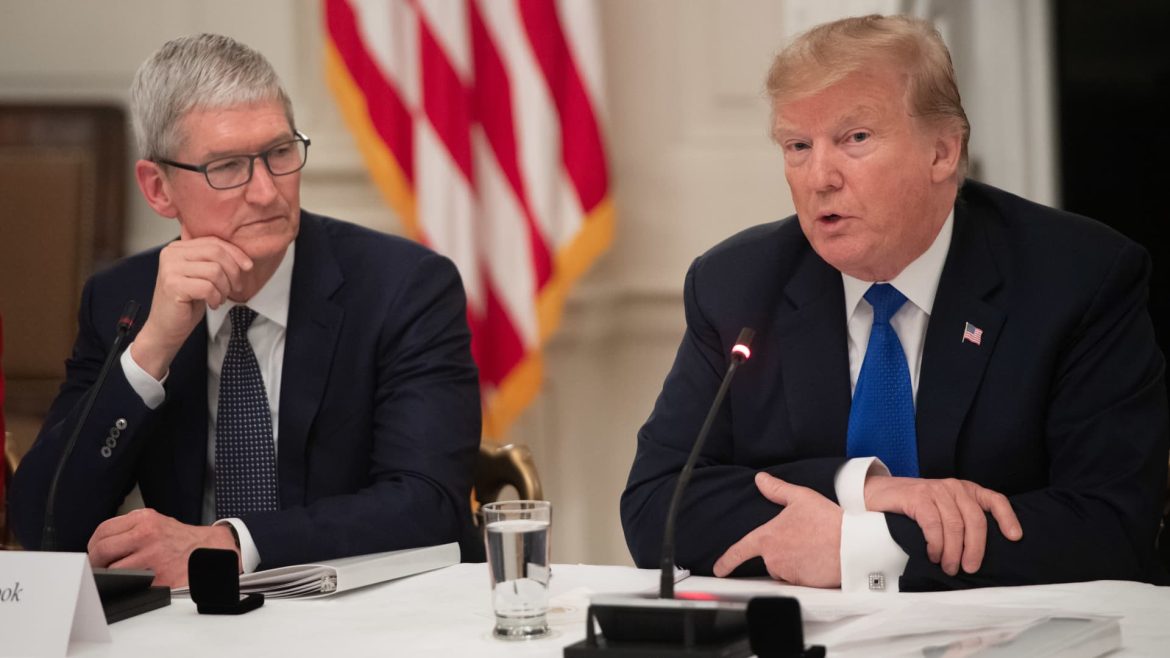U.S. President Trump’s Opposition to Apple Manufacturing Expansion in India: A Comprehensive Analysis
Recent reports reveal that former U.S. President Donald Trump openly expressed his disapproval of Apple Inc.’s increasing manufacturing footprint in India. In a direct conversation with Apple CEO Tim Cook, Trump urged the technology giant to halt or limit production in India and instead expand manufacturing operations within the United States. This report examines the context, implications, and underlying dynamics of this high-profile diplomatic and economic exchange.
—
Context of the Trump-Cook Exchange
During a business event in Doha, Qatar, Trump disclosed that he had a “little problem” with Tim Cook over Apple’s expanding manufacturing activities in India. According to his statements:
– Trump relayed that the U.S. government had accommodated Apple for years, particularly by tolerating extensive manufacturing operations in China.
– He expressed frustration about Apple’s current strategy to diversify production away from China by scaling factories across India.
– Trump indicated that India can “take care of themselves,” implying that the U.S. should be the primary beneficiary of Apple’s manufacturing investments.
– He underscored that Apple’s production should be “upped” in the U.S., urging a reshoring of manufacturing jobs and activities.
This candid admission highlights a tension between Apple’s business strategy and the political-economic agenda pushed by the Trump administration.
—
Apple’s Manufacturing Strategy and India’s Role
Apple’s shift into India is a significant component of its supply chain diversification strategy, accelerated by rising tariffs and geopolitical tensions affecting China:
– India has become a growing manufacturing hub for Apple, with partners like Foxconn and Tata Electronics ramping up iPhone assembly. Production in India reportedly increased dramatically, with a $22 billion output jump over the past year in the region.
– India offers lower tariffs on goods compared to China’s complex trade landscape and allows Apple to mitigate risks linked to the U.S.-China trade war.
– Apple’s increased footprint in India also taps into a massive and growing domestic consumer market, aligned with the Indian government’s “Make in India” initiative that supports localized manufacturing.
Despite Trump’s insistence on U.S.-centric production, Apple’s decisions are financially motivated by cost efficiencies, supply chain resiliency, and market access opportunities.
—
Trade and Tariff Considerations
Trump’s opposition is articulated in the context of trade policy:
– He accused India of imposing some of the world’s highest tariff barriers, making it difficult to sell American products there.
– Simultaneously, Trump claimed India had offered “zero tariffs” on U.S. goods, yet the practical reality seemingly remains complex and challenging.
– U.S. tariffs on Chinese goods, initiated under Trump’s administration, aimed to encourage onshore manufacturing but have led companies like Apple to explore alternative low-cost manufacturing bases such as India and Vietnam.
This trade environment has induced Apple’s strategic shifts, seemingly at odds with Trump’s preference for reshoring to America, fueling friction between corporate globalization and nationalistic economic policies.
—
Feasibility and Challenges of Reshoring Manufacturing to the U.S.
Beyond political declarations, reshoring Apple’s sophisticated manufacturing wholly to the United States faces considerable challenges:
– Labor costs in the U.S. are substantially higher than in India or China, potentially escalating production expenses and reducing competitiveness.
– Apple’s complex supply chain depends on tooling, specialized machinery, and skilled labor, much of which is concentrated in Asia.
– A complete relocation would require massive capital investments, retraining, and time to replicate existing efficiencies.
– Analysts and industry experts have expressed skepticism about the practicality of producing cost-effective iPhones domestically at scale.
Thus, Trump’s call for Apple to boost U.S. manufacturing, while appealing politically, confronts significant economic and operational obstacles.
—
India’s Position and Its Ability to Self-Sustain
Trump’s assertion that “India can take care of themselves” reflects skepticism about the need for U.S. production support there but oversimplifies India’s strategic importance:
– India is proactively seeking to become a global manufacturing hub, inviting foreign investment and fostering its tech ecosystem.
– Apple’s expansion supports hundreds of thousands of jobs and nurtures India’s industrial capabilities.
– From a geopolitical standpoint, India serves as a key player counterbalancing China’s dominance — Apple’s expanding production there reflects this broader realignment.
Therefore, India’s manufacturing momentum is not merely incidental but a deliberate strategic evolution in the global tech supply chain.
—
Broader Implications for Global Supply Chains and U.S. Policy
The friction between Trump’s manufacturing nationalism and Apple’s global diversification strategy illuminates wider themes:
– Multinational corporations navigate complex trade environments by balancing production cost, risk mitigation, and market access, often transcending geopolitical impulses.
– Political pressure to concentrate manufacturing domestically may clash with economic realities of competitive global supply chains.
– The U.S. desire to retain technology manufacturing power is challenged by entrenched Asian infrastructures and cost advantages.
– Dialogue between government leaders and corporate executives, such as Trump and Cook’s conversations, underscores the ongoing negotiation between economic policy goals and corporate autonomy.
These dynamics reveal the nuanced interplay of political agendas and corporate strategies amid evolving international trade realities.
—
Conclusion: Navigating Conflicting Priorities in a Complex Global Economy
The public exchange between former President Donald Trump and Apple CEO Tim Cook over manufacturing strategies in India versus the United States encapsulates a broader struggle in modern economic policymaking. On one side lies a political push for “America first” industrial revival, and on the other, a corporate imperative to optimize supply chains amid competing tariffs, rising costs, and geopolitical uncertainties.
While Trump’s insistence on reshoring Apple’s production is rooted in ideological and nationalistic priorities, Apple’s expansion in India represents a pragmatic response to global market and trade pressures. The feasibility of suddenly redirecting complex electronics manufacturing back to the U.S. remains doubtful given economic and operational constraints.
Ultimately, the tensions between government-driven manufacturing nationalism and corporate globalization strategies will continue to shape the technology sector’s landscape. Understanding these competing imperatives—and the tradeoffs involved—is vital for stakeholders seeking to navigate the future of global production, innovation, and economic diplomacy.


